Last Saturday, at about 3:30 p.m. on a very hot day, I drove by the Fallon Municipal Swimming Pool, part of the Oats Park complex. It was the height of the heat; my car gave me the news that it was 95 degrees outside. I wanted to test my memories of the place, memories stemming from both my childhood days (1950’s) and my early parenthood days (1970’s and 80’s). I remembered, in my youthful years, being up to my neck in refreshing chlorinated water and tentatively jumping, not diving, from the 10-foot-high diving board. I also remembered visiting Bob’s Market, across Park Street from the pool, to buy a post-swim candy bar. Years later, I watched my own children learn to swim there while I watched swimming lessons from the southside bleachers. I needed to know: was the “pool” still the cool place to be on a torrid Fallon summer day?
On that Saturday afternoon, the pool was hoppin’. Every parking space was filled. The sounds were familiar—splashes, screams, parental warnings, and squeals of pure delight. The sights were also familiar, except for the fact that the legendary 10-foot-high diving board has been replaced by a less dangerous model, a curved plastic tube, which safely drops the adventurer into the water, with a smaller splash. The bleachers are also gone. But, the Fallon Swimming Pool is, indeed, thriving, and it provides tangible proof that a well-designed and well-built facility can weather the ravages of time.
In May 1937, the plan to build the Pool was launched. Editorials in the Fallon Eagle had questioned the town’s “lack of initiative” in maintaining the existing, but unkempt, Oats Park.
To the rescue came the members of the Fallon 20-30 Club (a service organization for men between the ages of 20 and 30). They took up the idea of building a swimming pool in the park, raising enthusiasm but little money. It was, after all, the middle of the Great Depression. The resourceful Club members then turned to the federal Works Projects Administration (WPA) for financial assistance. WPA, at the time they received the Fallon swimming pool proposal, had already helped fund Fallon’s South Maine Street ball field and a new asphalt tennis court at Oats Park. The rule applied was that a local entity supply 20-40% of the cost of the project; the WPA would provide the rest through paid labor.
The WPA was funded by the Franklin Roosevelt administration in 1935 to provide public works jobs for otherwise unemployed men and women. Over its life span, and that of its successor, the Work Projects Administration (1939-1943), it hired 8.5 million people. The WPA construction dossier is impressive to look at, citing the funding of over 40,000 new and 85,000 improved structures, including roads (620,000 miles), bridges (10,000), schools (5900), libraries (1000), courthouses, hospitals, sidewalks, and city halls. Also in the dossier are 65 ski jumps, 254 golf courses, 3,185 playgrounds, and 805 swimming pools, including the Fallon Municipal Swimming Pool.
With a plan in hand and an application sent to the WPA, the 20-30 Club members approached the Fallon City Council, who voted to approve the WPA contract, which allotted $51,000 in labor toward the project. In March 1937, the concrete was poured for the 110 x 50-foot Fallon Pool.
On July 30, 1939, the pool was formally opened, with fanfare. A dedication ceremony honored John Oats for his gift to Fallon of the entire Oats Park parcel. The Fallon Municipal Band played for 60 minutes, and swimming was free for the day.
Now, almost 90 years later, we have received our money’s worth. Not only is the Pool still the cool place to be on a hot summer’s day, but it is surrounded by the many improvements brought by the City of Fallon to Oats Park over the ensuing years: a stage for performances and concerts; a pickle ball court; a splash park; a children’s playground, a ballpark and lush, green grass. I’ll bet there is not a person in Fallon who hasn’t enjoyed the Pool or its surroundings.
Please send your story or an idea for a story to [email protected]. This week’s story was suggested by Syvia Lumos. Thank you, Sylvia.

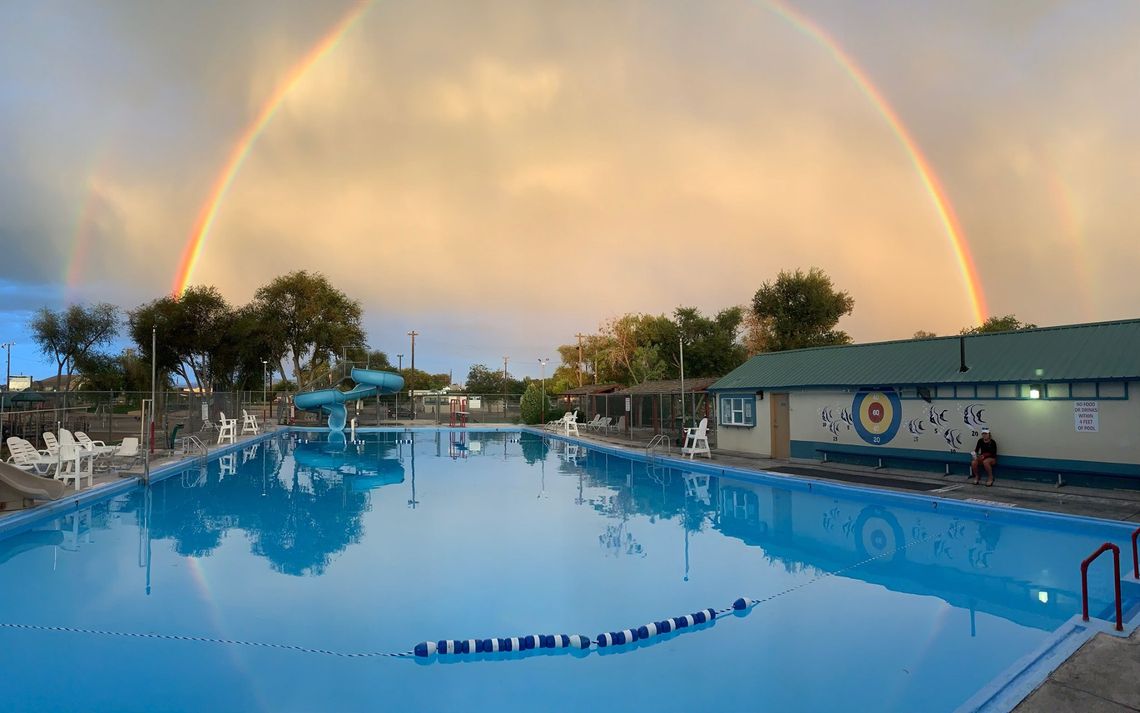
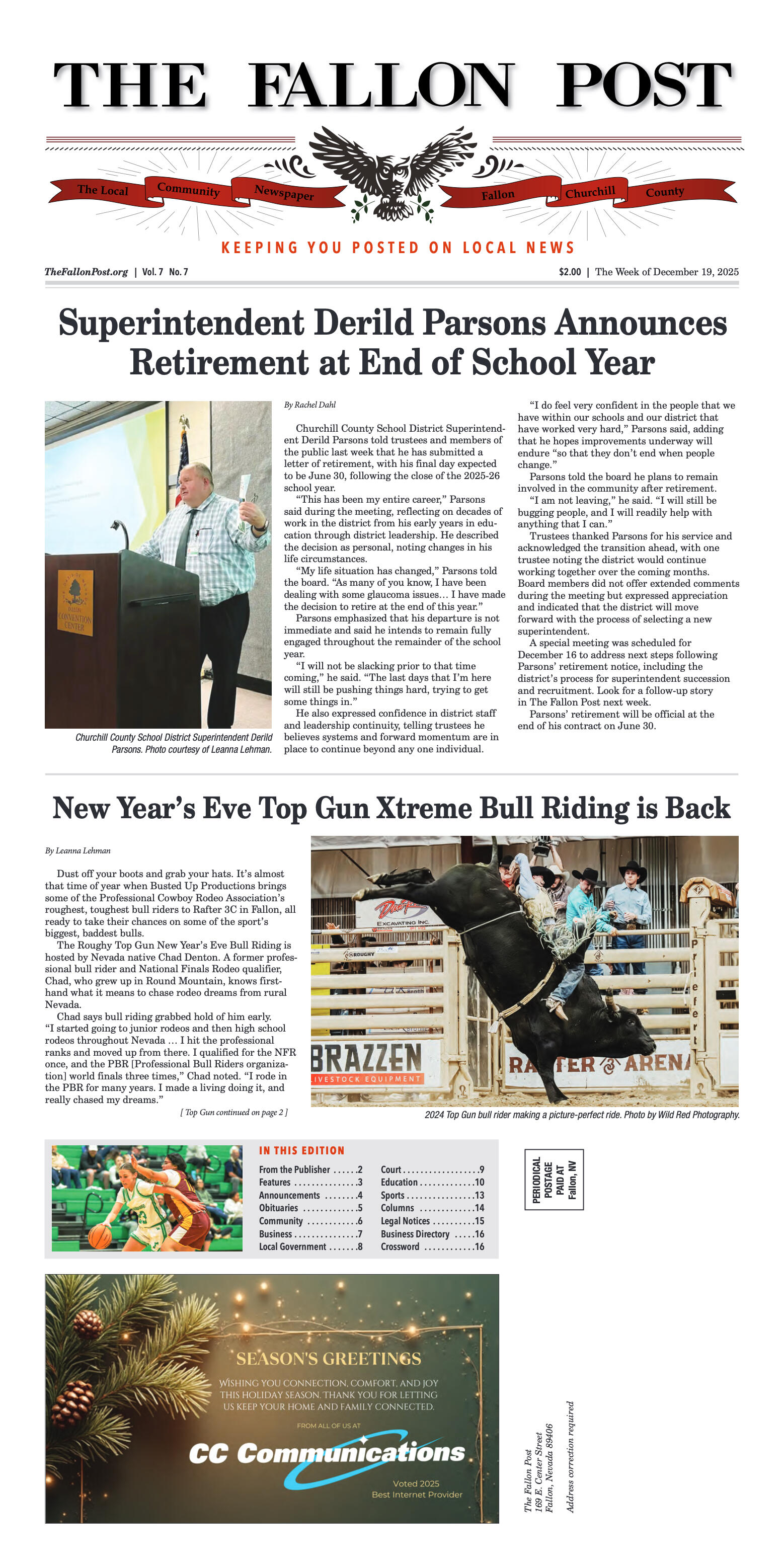
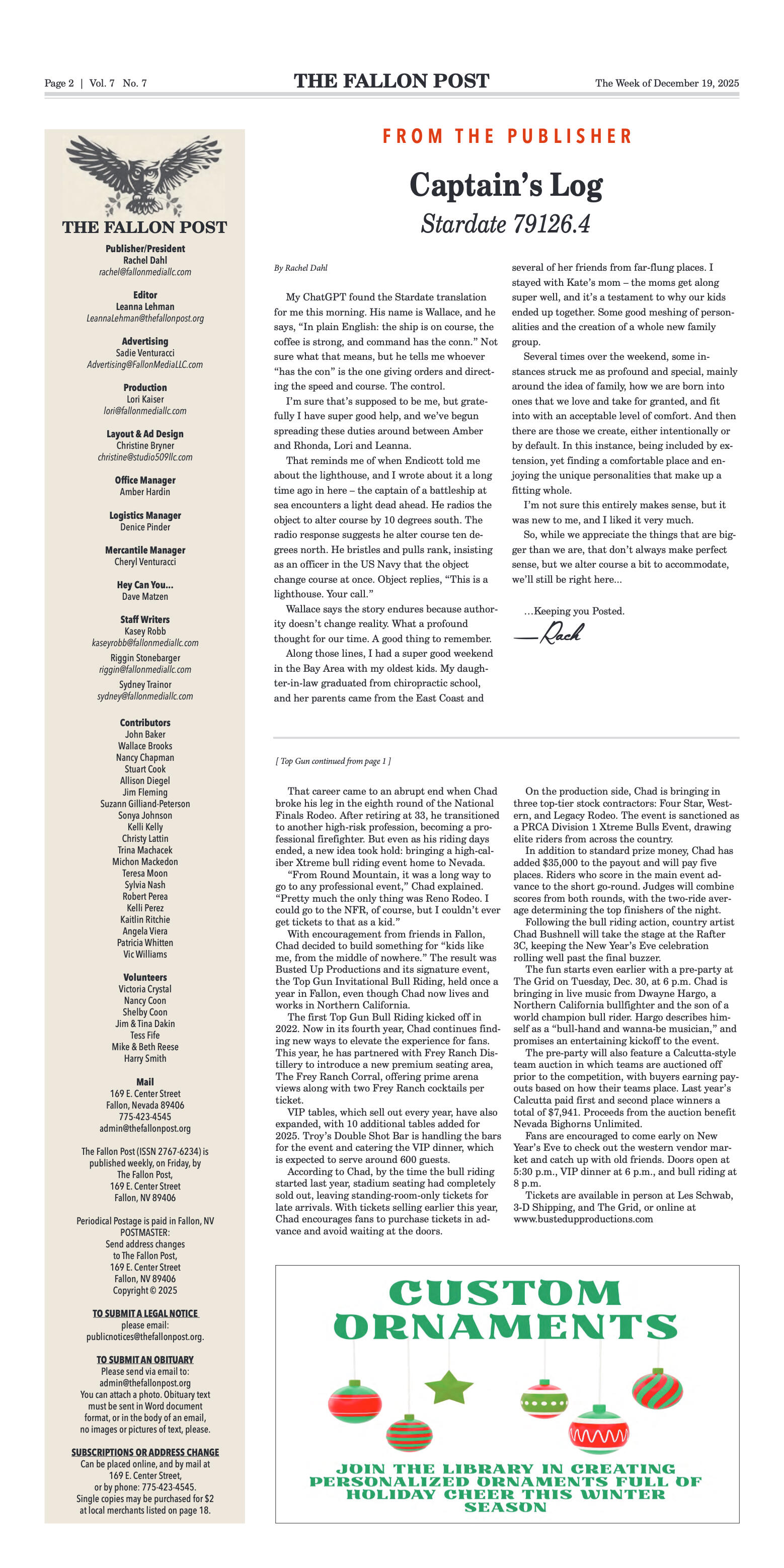
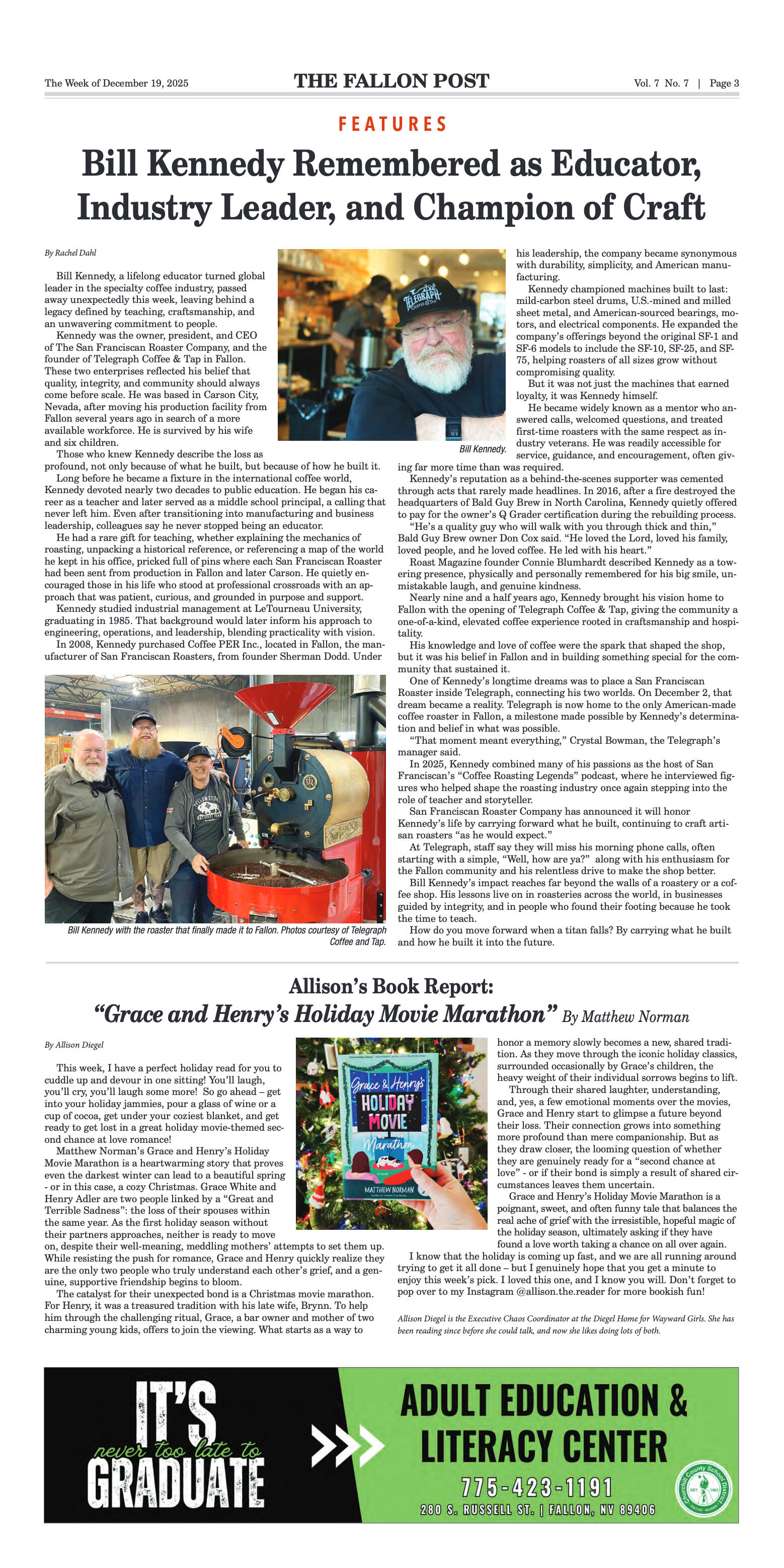

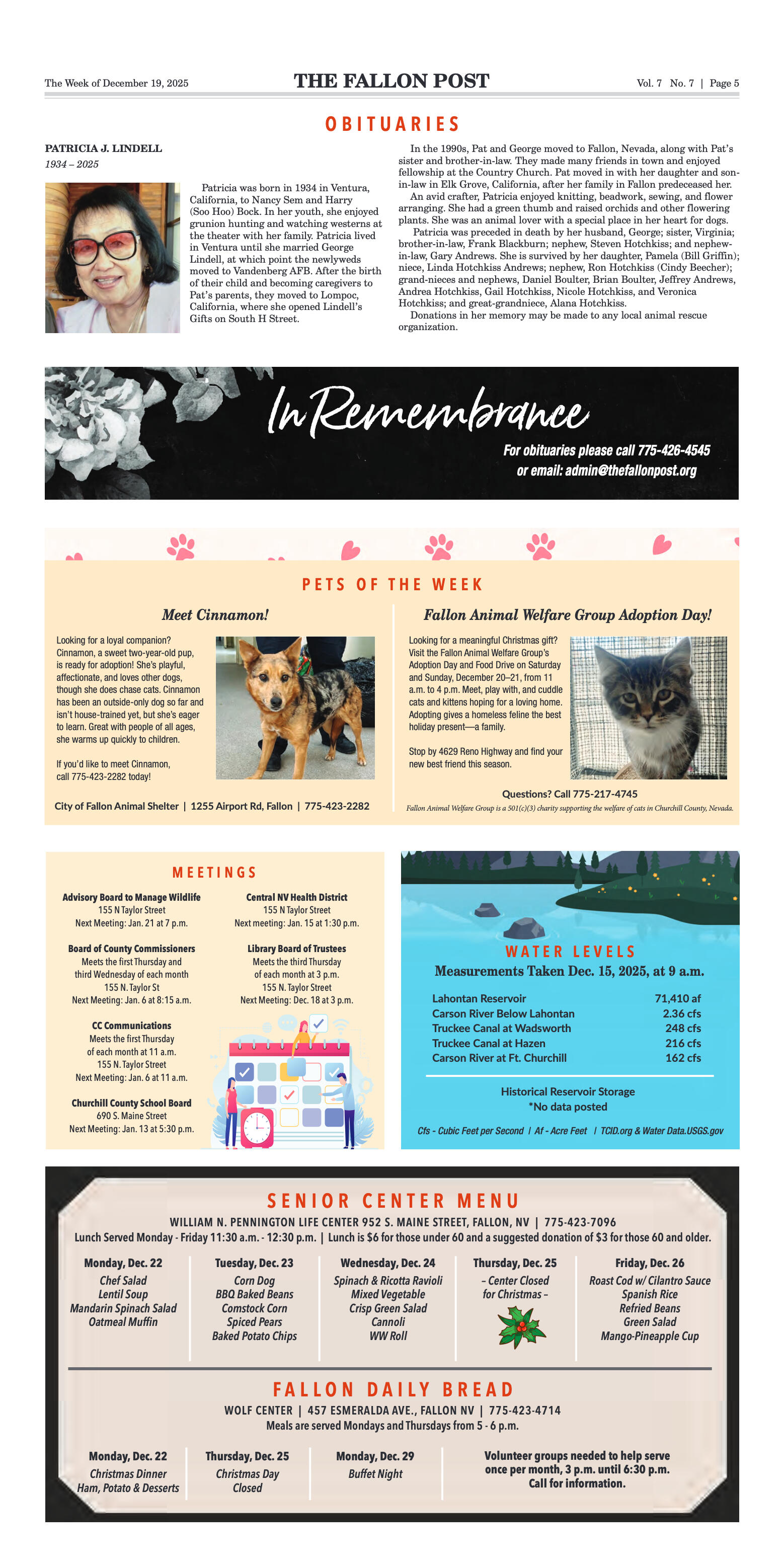
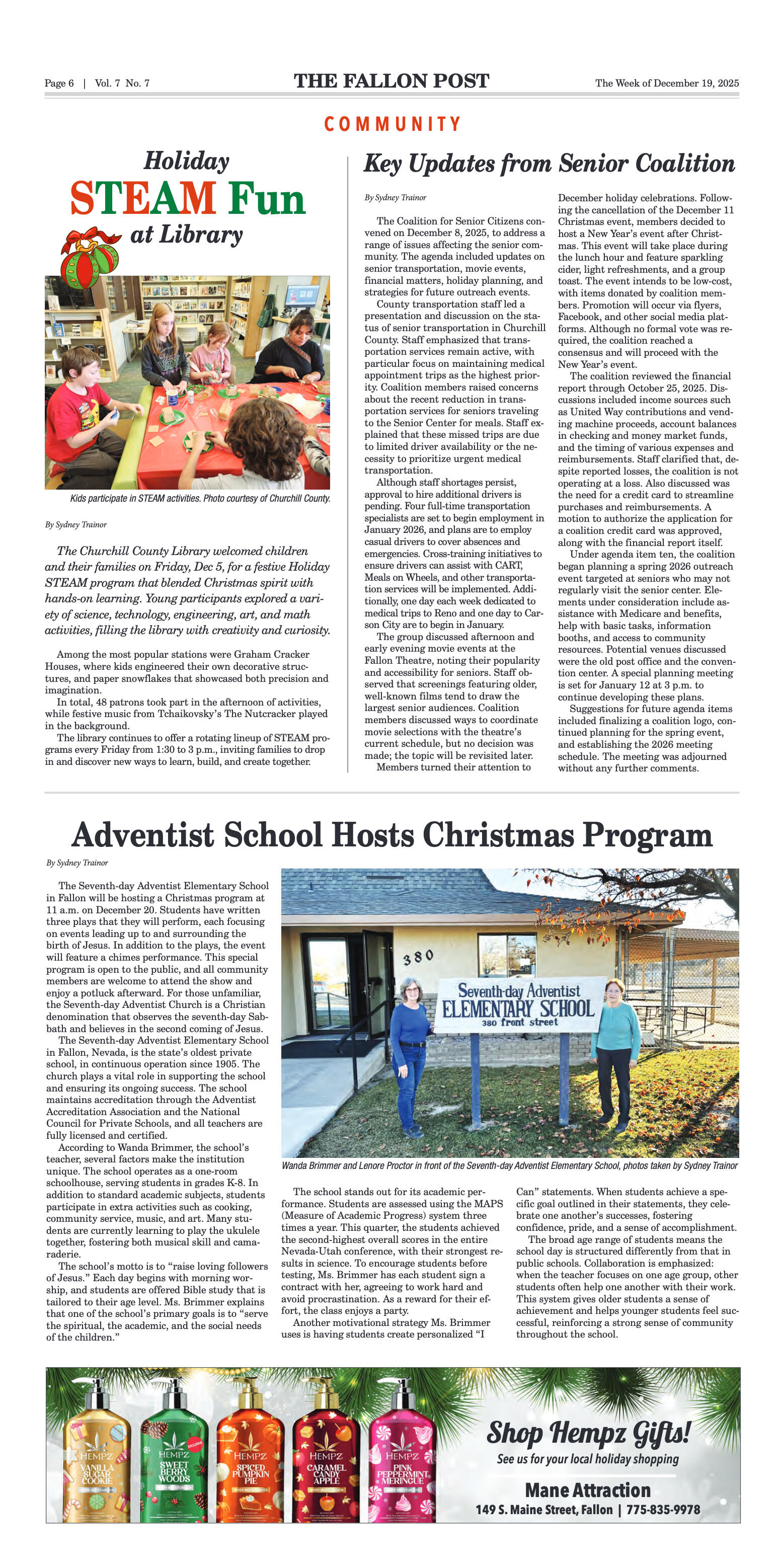
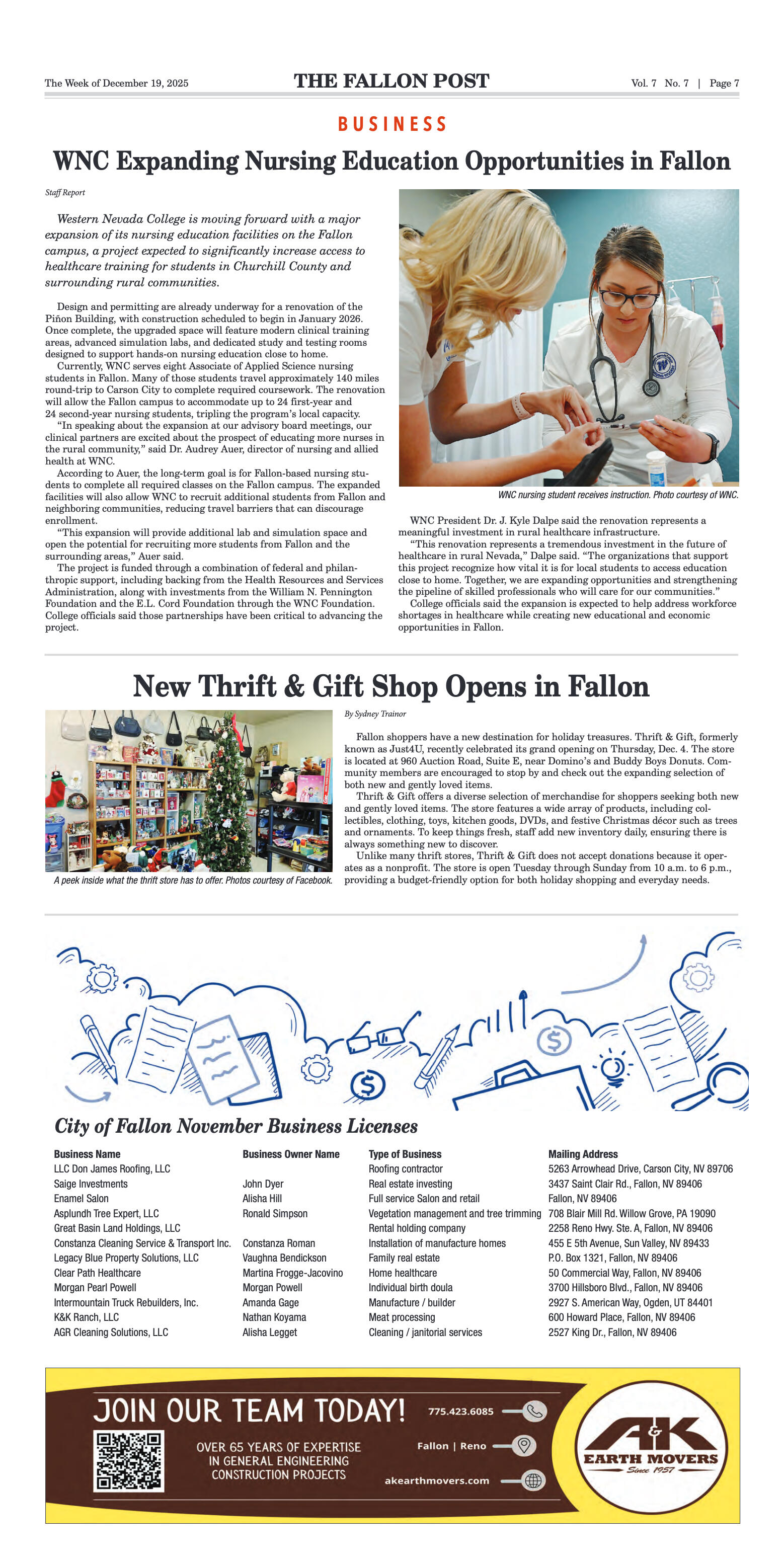
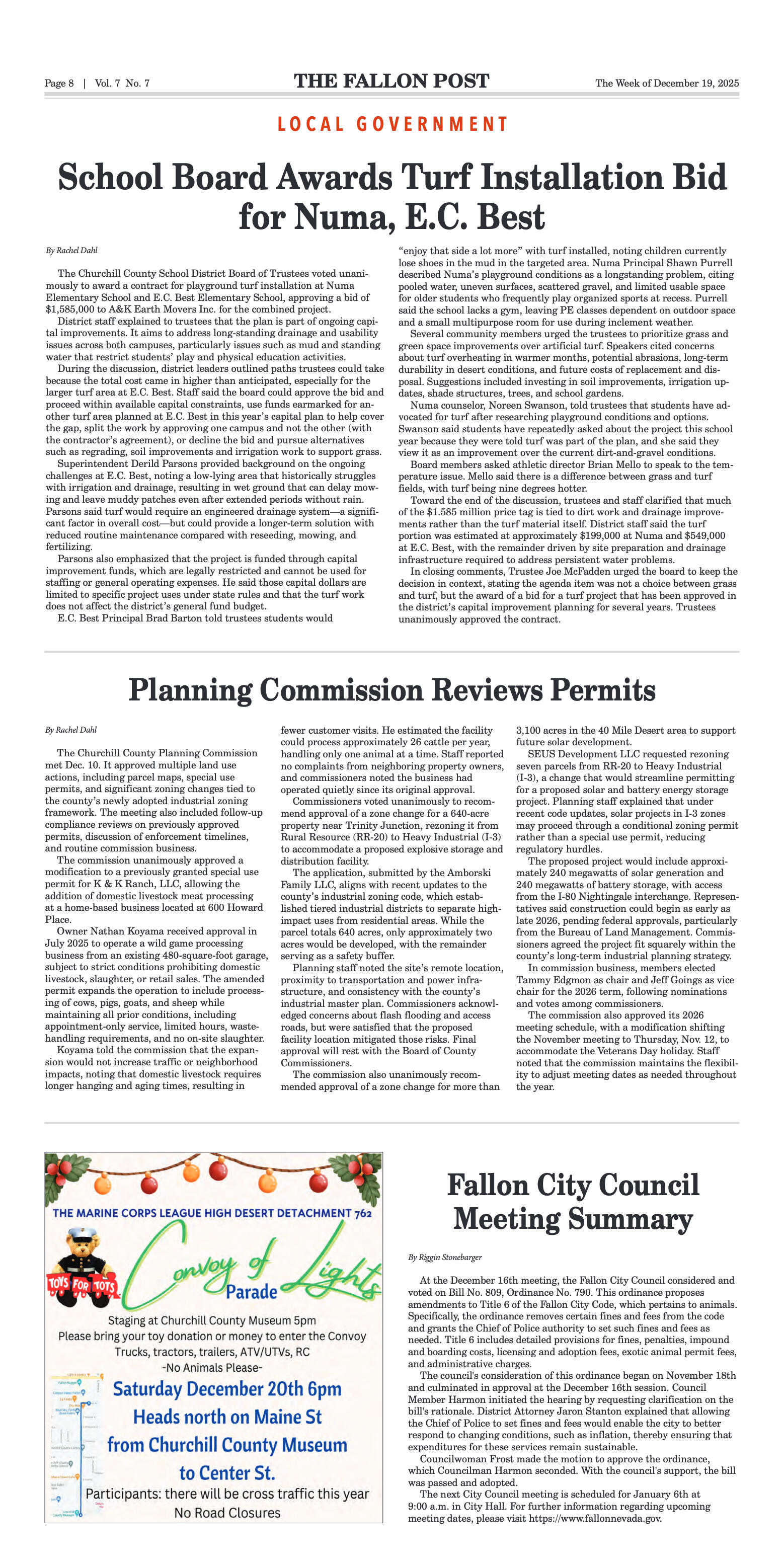

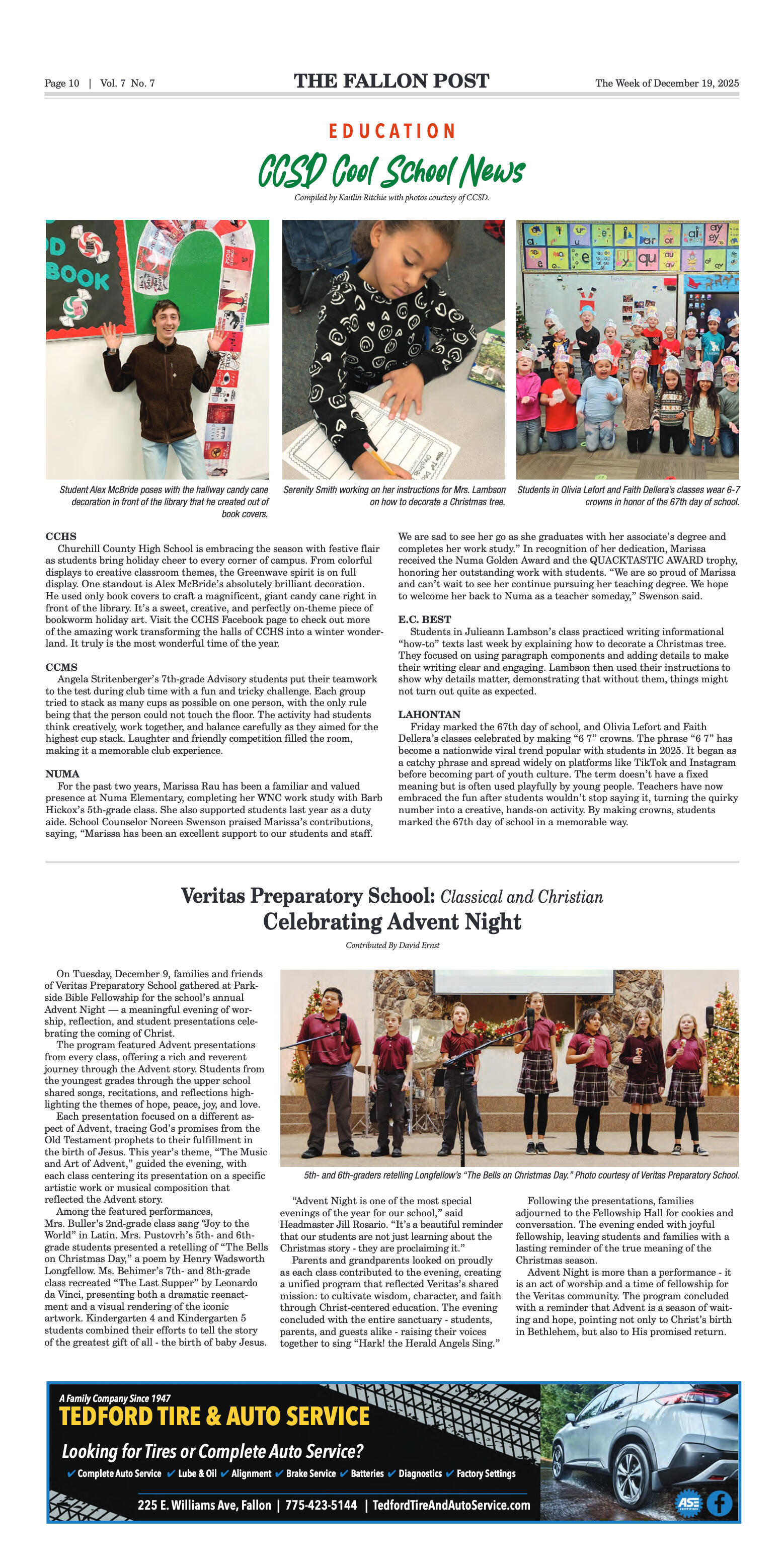



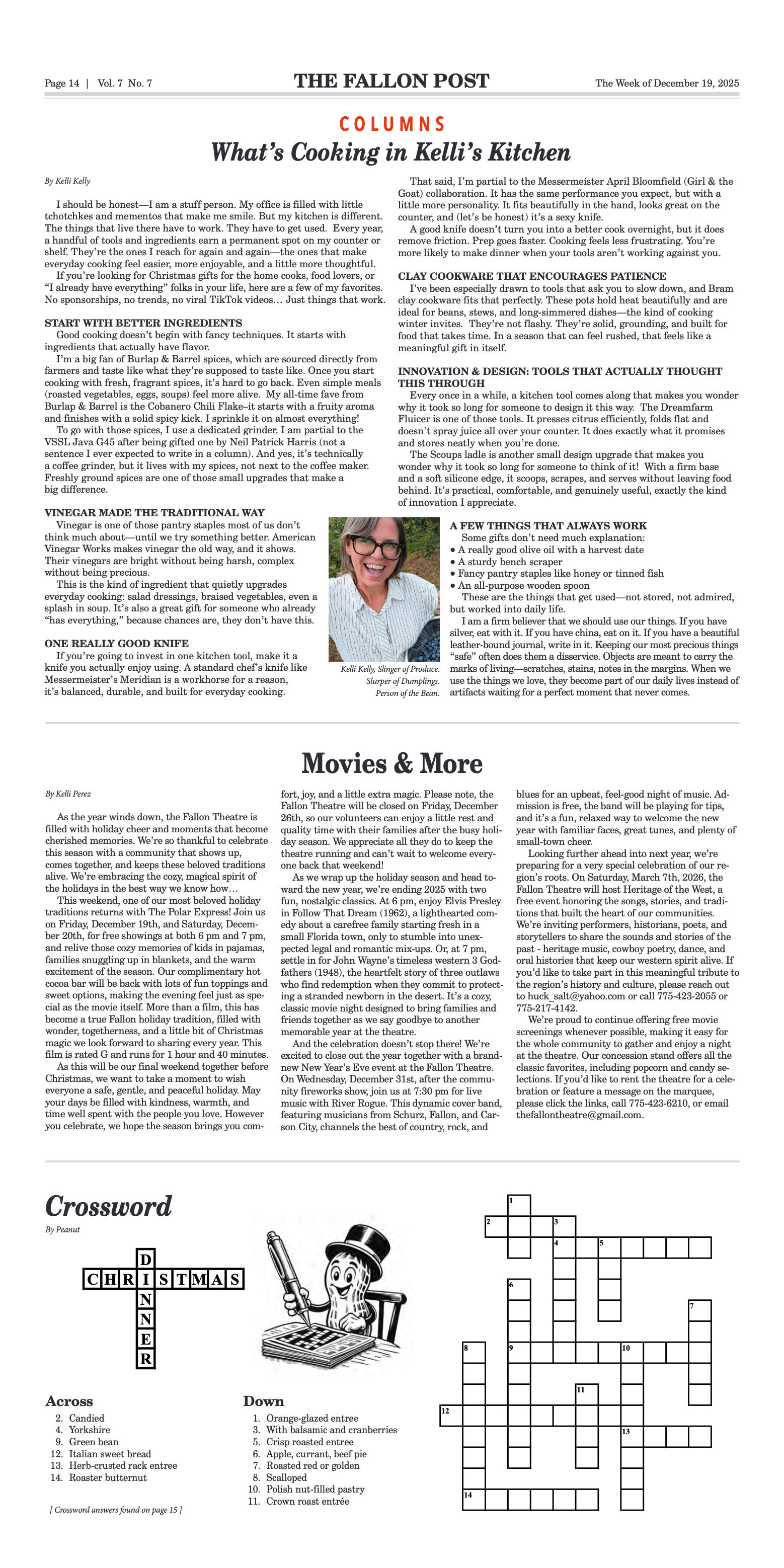

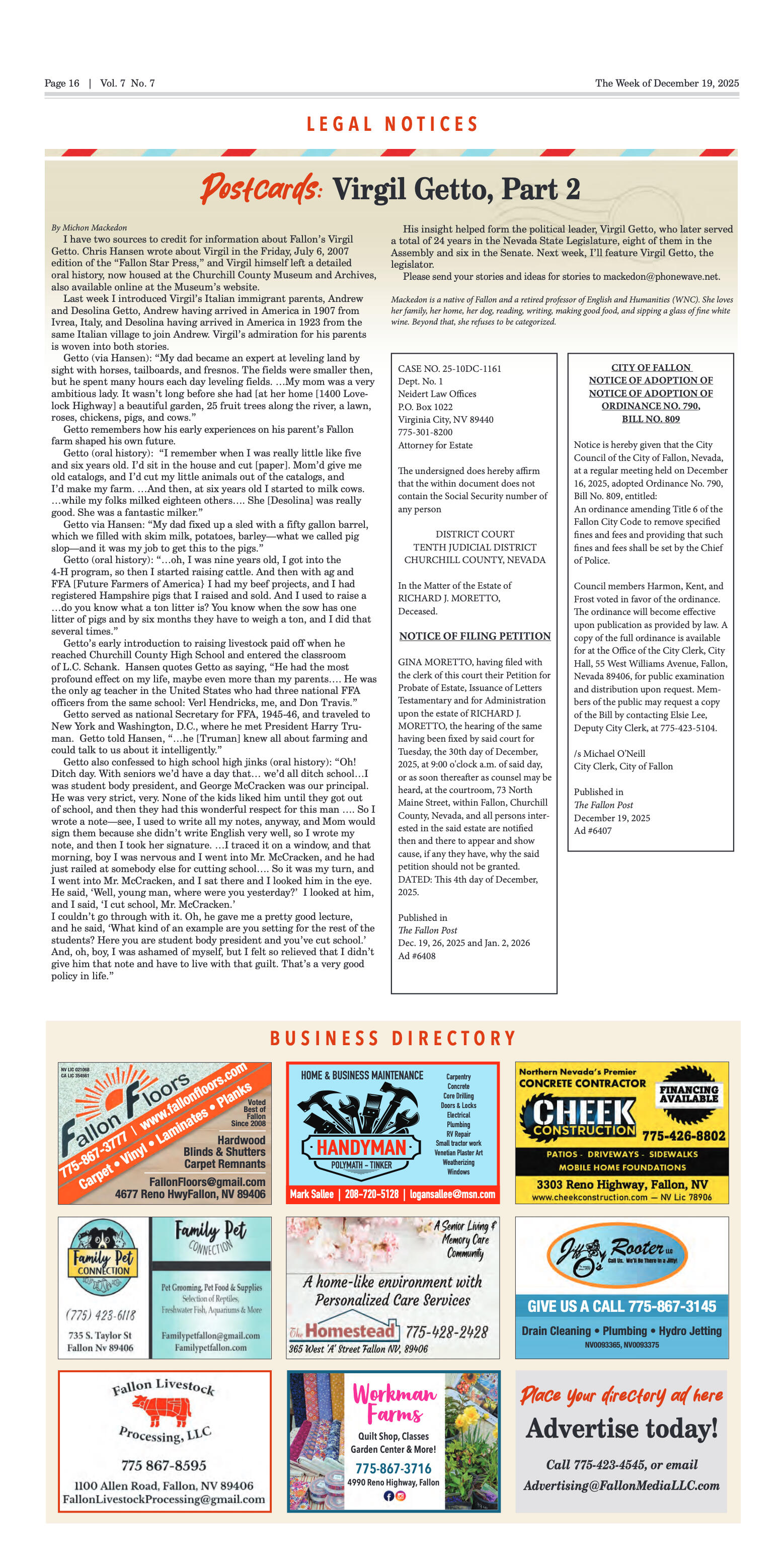




















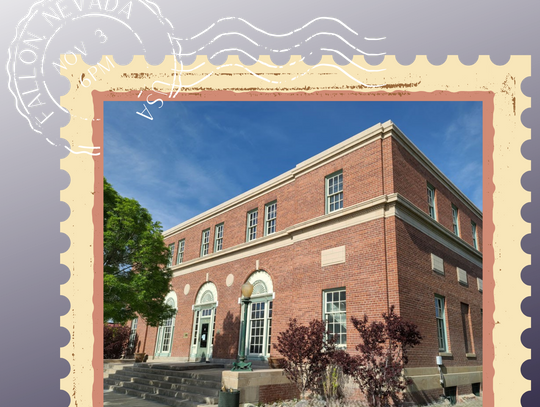




Comment
Comments